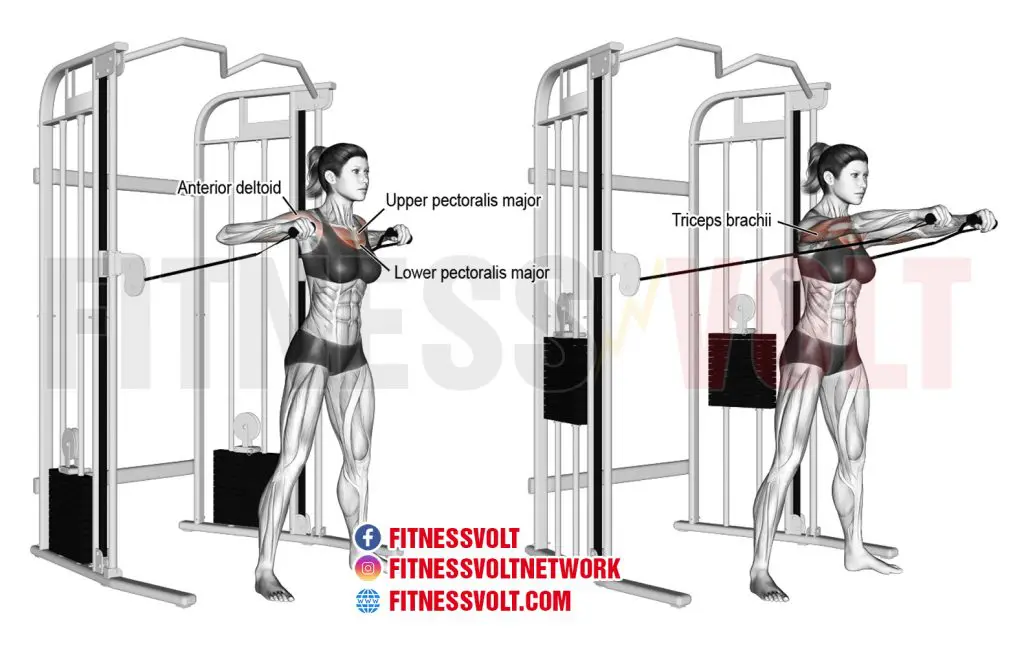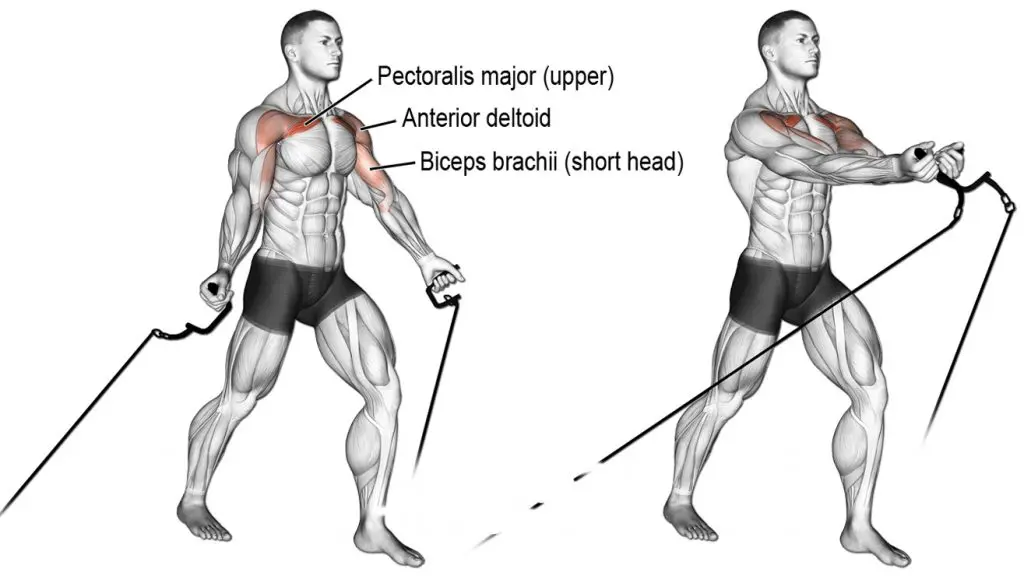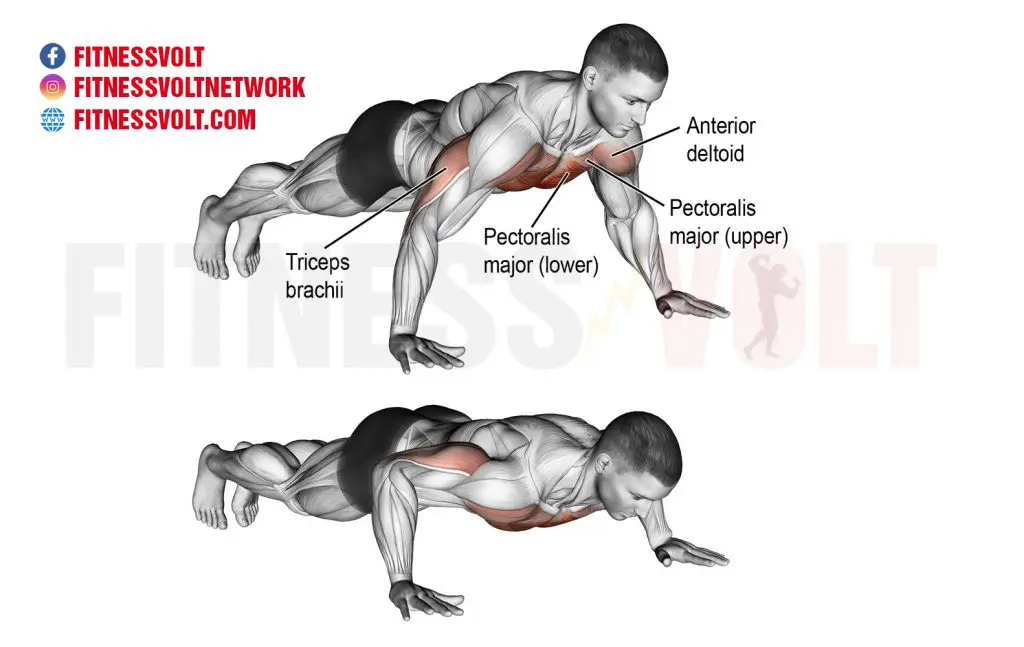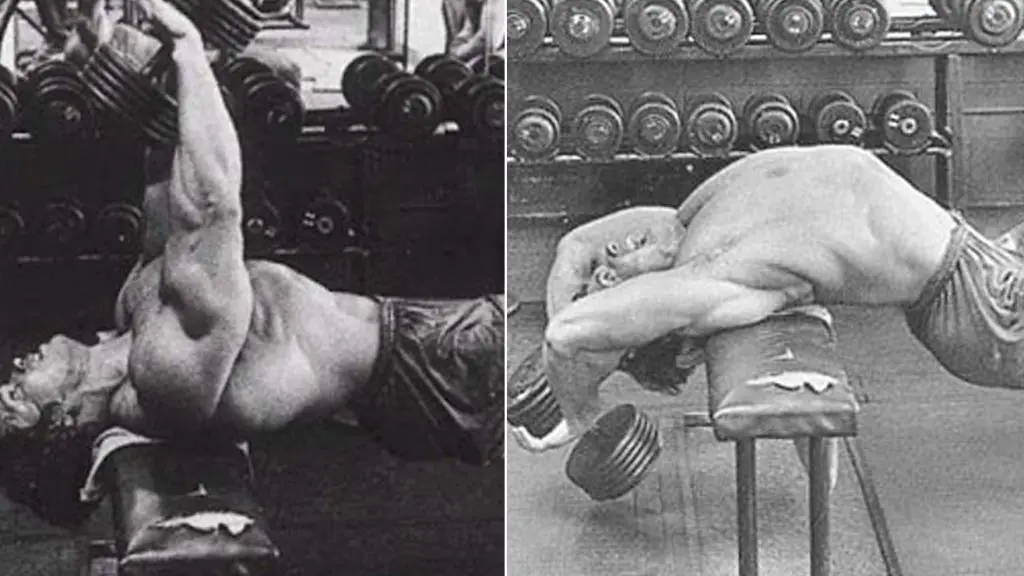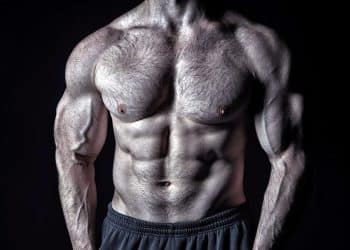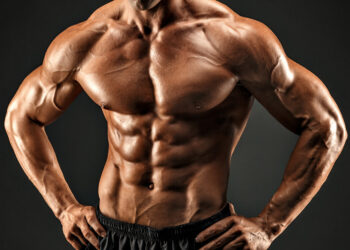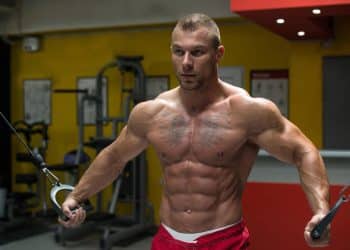From simply trying to improve your health, lose a little weight to bulking up and pushing your body and mind to its limits, when it comes to fitness goals, the range is extremely wide. Regardless of your goals, for a proportionate look, you should work out every part of your body.
That means not skipping chest day. While the bench is an excellent piece of equipment that helps facilitate chest exercises, it isn’t – and does not have to be – your only option. Some find that using the bench places excess stress on the deltoid muscles which poses a problem for those with injured shoulders.
Some simply prefer not to use a bench, while others just want to mix it up now and then. Besides, variety is the spice of life, right?
Whatever your reason is for not wanting to use the bench, the good news is that you can still achieve an effective workout. Here are some great chest workout, non-bench options for you to try.
6 Chest Workouts to Try Without a Bench
1- Standing Chest Press
Not only do you not need a bench, but you only need one piece of equipment – a dumbbell. The standing chest press is completed in a standing position and uniquely targets your pectoral muscles in a way that new muscle stimulation and growth.
Standing with your feet shoulder-width apart, hold your dumbbell between each palm – your arms bent in front of your chest.
Level Up Your Fitness: Join our 💪 strong community in Fitness Volt Newsletter. Get daily inspiration, expert-backed workouts, nutrition tips, the latest in strength sports, and the support you need to reach your goals. Subscribe for free!
Then squeezing the dumbbell with your palms to activate the chest, push the dumbbell away from your chest until your arms reach full extension. Then return to the starting position. Care should be taken not to drop your arms as you fatigue. Additionally, to avoid stress on the lower back, ensure that your core is engaged as you push the weight away from your chest.
2- Landmine Press
This explosive workout involves squatting, lifting or pressing on the end of an angled barbell and is a great option for those who are new to lifting weights. Consider it an entry point between unweighted exercises and fully loaded barbell exercises.
The landmine press targets almost all of your upper body with the shoulders, triceps, and chest taking on most of the work. To perform this chest workout, stand with your legs shoulder-width apart and with the barbell securely wedged in a landmine device.
Holding the other end of the weight in front of your chest with both hands, press the weight up until both arms are extended, then slowly bring it back.
Variations of this workout include:
- Single-arm
- Standing
- kneeling
3- Standing Upward Chest Fly
This workout effectively targets your upper, middle, and lower chest while also engaging the triceps, biceps, and core. Holding a dumbbell in each hand down by your sides, stand in a neutral, grounded position. With your palms facing forward and your arms slightly bent, raise the dumbbells up to chest level making the sides touch before lowering back down.
Ensure that the movements up and down are slow and controlled and not momentum-based to create a swinging motion. For added variation, the standing upward chest fly can be performed one arm at a time or by alternating from right to left.
4- Pushups
An oldie but a goldie, there is a reason why the push up remains one of the go-to workouts. It may be a basic body-weight exercise, but it is also a standard measure of fitness from kids to Navy SEALS.
It works your chest while strengthening your core and engaging your deltoids and triceps – muscle activation occurs in different areas of your body. It also has the added benefit of being performed anytime, anywhere. This is another chest workout that has several variations, however, to perform a basic push-up the right way this is all you need to do:
- Position your hands directly below your shoulders
- Your back, head, and buttocks should be in a straight line
- Your weight should be on your toes with your legs extended
- Your core and Glutes should be engaged
- Make sure your shoulder blades are down and back
- In slow, controlled motion, lower your body until your triceps are parallel to the ground
- Your elbows should be tucked in close to your body
5- Dumbbell Pull-Overs with Stability Ball
This workout is normally done using a bench. However, the use of the stability ball makes it more challenging due to the added element of balance and stability work.
Beginning in a bridge position with the stability ball supporting your upper back, hold a dumbbell between your hands with your arms extended above your chest. Slowly and with control, lower the dumbbell behind your head until your latissimus dorsi feel stretched.
When returning to the starting position, remember to rotate your wrists inward rather than outward. This engages the chest during this part of the exercise instead of your lats.
Engaging your core will help support a neutral spine and avoid hyper-flexion when the dumbbell is behind your head.
6- Floor Press
The floor press is a great way to amp up your bench press routine if it has hit a plateau. Lie on your back on the floor and position yourself underneath the bar. Extend your arms up, pushing the bar as you would in a conventional bench press.
You may find that you are able to lift more weight with a floor press compared to a bench press because the repetition ends when your triceps hit the floor. If the lockout part of the press is a weak point for you, the floor press can help you improve on this.
Who Needs A Bench?
Eliminating the bench from your chest workout can do wonders for your routine. Not only can it help avoid injury or add variety, but it can also help target different parts of your chest.
With so many effective chest workout, non-bench options available, who needs a bench anyways?
References
1- Saeterbakken, Atle H.; van den Tillaar, Roland; Fimland, Marius S. (2011-3). “A comparison of muscle activity and 1-RM strength of three chest-press exercises with different stability requirements”. Journal of Sports Sciences. 29 (5): 533–538. doi:10.1080/02640414.2010.543916. ISSN 1466-447X. PMID 21225489.
2- Calatayud, Joaquin; Borreani, Sebastien; Colado, Juan C.; Martín, Fernando F; Rogers, Michael E.; Behm, David G.; Andersen, Lars L. (September 1, 2014). “Muscle Activation during Push-Ups with Different Suspension Training Systems”. Journal of Sports Science & Medicine. 13 (3): 502–510. ISSN 1303-2968. PMC 4126284. PMID 25177174.
3- Kim, You-Sin; Kim, Do-Yeon; Ha, Min-Seong (2016-2). “Effect of the push-up exercise at different palmar width on muscle activities”. Journal of Physical Therapy Science. 28 (2): 446–449. doi:10.1589/jpts.28.446. ISSN 0915-5287. PMC 4792988. PMID 27064571.
4- Marshall, Paul W.; Murphy, Bernadette A. (2005-2). “Core stability exercises on and off a Swiss ball”. Archives of Physical Medicine and Rehabilitation. 86 (2): 242–249. doi:10.1016/j.apmr.2004.05.004. ISSN 0003-9993. PMID 15706550.
5- Jeno, Susan H.; Varacallo, Matthew (2019), “Anatomy, Back, Latissimus Dorsi”, StatPearls, StatPearls Publishing, PMID 28846224.

